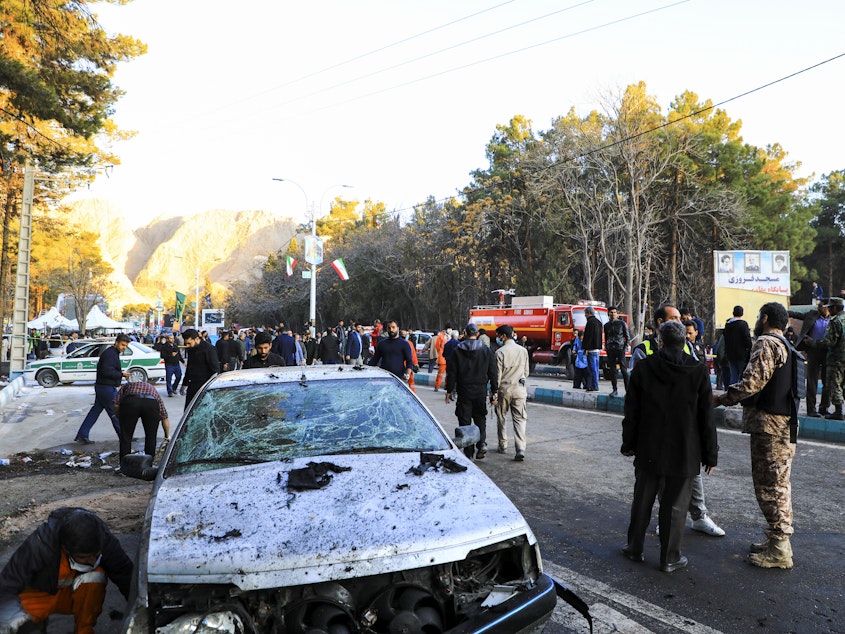Islamic State claims responsibility for suicide bombings that killed dozens in Iran

DUBAI, United Arab Emirates — The Islamic State group claimed responsibility Thursday for two suicide bombings targeting a commemoration for an Iranian general slain in a 2020 U.S. drone strike, the worst militant attack to strike Iran in decades as the wider Middle East remains on edge.
Experts who follow the group confirmed that the statement, circulated online among jihadists, came from the extremists, who likely hope to take advantage of the chaos gripping the region amid Israel's war on Hamas in the Gaza Strip.
Wednesday's attack in Kerman killed at least 84 people and wounded another 284. It targeted a ceremony honoring Revolutionary Guard Gen. Qassem Soleimani, held as an icon by supporters of the country's theocracy and viewed by the U.S. military as a deadly foe who aided militants who killed American troops in Iraq.
The Islamic State group claim identified the two attackers as Omar al-Mowahed and Seif-Allah al-Mujahed. The claim said the men carried out the attacks with explosive vests. It also used disparaging language when discussing Shiites, which the Islamic State group views as heretics.
The statement did not mention which regional arm of the extremists carried out the attack, which other claims in the past have had. But Aaron Y. Zelin, a senior fellow at The Washington Institute for Near East Policy, said that some previous claims have not specified the regional arm, and that the latest claim came directly from an account associated with the group.
Sponsored
The group likely hoped to see Iran strike at Israel, widening its war on Hamas into a regional conflict that Islamic State could potentially take advantage of, Zelin said.
"This falls under the modus operandi of IS, especially since it was such a mass casualty attack," Zelin said. "They are kind of like the Joker. They want to see the world burn. They don't care how it happens as long as it benefits them."
The Islamic State group, which once held vast territory across Iraq and Syria, ultimately were beaten back by U.S.-led forces. It has been in disarray in the years since, though it has mounted major assaults.
Iran did not immediately acknowledge the claim.
An earlier report by the state-run IRNA news agency, later aired by state television, quoted an unnamed "informed source" as saying that surveillance footage from the route to the commemoration at Kerman's Matryrs Cemetery clearly showed a male suicide bomber detonating explosives.
Sponsored
The official said the second blast "probably" came from another suicide bomber, though it hadn't been determined beyond doubt.
The Iranian state media reports also gave new distances for how far apart the blasts happened, describing them as occurring 1.5 kilometer (about a mile) and 2.7 kilometers (1.68 miles) away from Soleimani's crypt. The official said the bombers likely chose the locations because they were outside of the security perimeter for the commemoration.
An earlier death toll of 103 was twice revised lower after officials realized that some names had been repeated on a list of victims and due to the severity of wounds suffered by some of the dead, health authorities said. Many of the wounded were in critical condition, however, so the death toll could rise.
The gathering marked the fourth anniversary of the killing of Soleimani, the head of the Revolutionary Guard's elite Quds Force, in a U.S. drone strike in Iraq. The explosions occurred as long lines of people gathered to mark the event.
Iranian state television and officials described the attacks as bombings, without immediately giving clear details of what happened. The attacks came a day after a deputy head of the Palestinian militant group Hamas was killed in a suspected Israeli strike in Beirut. [Copyright 2024 NPR]
